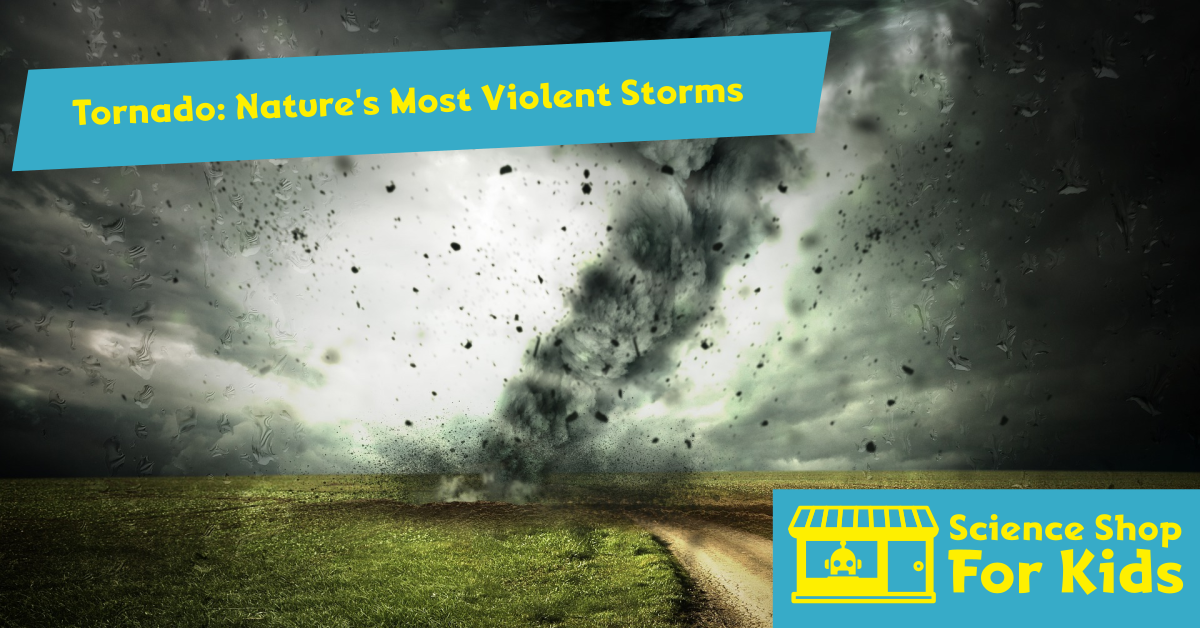Tornadoes occur in many places all over the world and are one of the most common, destructive forces of nature. Typically occuring in the spring and summer months, Tornados have certain characteristics. They consist of a violently rotating column of air which touches the ground and is often attached to a thunderstorm. Most tornadoes can have wind speeds of up to 300 mph and cause enormous destruction and devastation.

What causes tornadoes?
In warm, moist air, thunderstorms form in advance of the cold eastwards. Often these storms create giant grass, high gusts, and tornadoes. Across winter and early spring, tornadoes are typically linked with robust frontal systems. Forming and moving east in the Central States. Sometimes, with this sort of weather system, massive tornadoes are found. Many severe thunderstorms and tornadoes can strike several states.
During springtime and summer, a ‘dryline’ which divides a moist air mass from a dry air mass is crucial when forecasting severe weather. This is beacuse they can produce thunderstorms that can generate tornadoes.
Drylines usually set up north to south and are associated with large scale low pressure systems with a cold and warm front. When weather is severe, the dry line dictates what what places are ‘danger zones’ in the east and can enable us to determine where storms will come. Locations on the west of the dry line generally do not need to fear the impacts of severe weather.
The tropical storms and hurricanes that travel over land occasionally accompany the tornadoes. The most common tornadoes to the right and in front of the storm center route is onshore.


Tornado Variations
- In the early days of quickly building thunderstorms, some tornadoes may emerge. The most prevalent form of a tornado is in the Rocky Mountains, the Plains, and the Western States.
- Until dust and debris are collected, tornadoes seem almost translucent.
- Two or more tornadoes may strike simultaneously on occasion.
Waterspout
- Tornadoes that originate over warm water are weak tornados.
- The Gulf Coast and the southeastern states are the waterspouts most prevalent. In the West, cold late fall and late winter storms occur when tornado growth is less expected.
- Occasionally, water flows continue inland to tornadoes that cause destruction and injury.
How Do Tornadoes Form?
Before storms occur, the air usually becomes very still and the wind dies down. This is usually followed by a loud roar. There may also be an approaching cloud of debris, particuarly at ground level.
Most tornadoes originate from thunderstorms. Cool dry air from Canada combined with Warm moist air from the gulf of mexico come together creating instability in the atmosphere. Changes in the direction of the wind and increases in height and speed produce a horizontal spin which is invisible. Rising air here tilts the rotation from horizontal to vertical.

A rising air tilts the rotating stand from horizontal to vertical in the thunderstorm updraft.

A 2-6 mile broad rotating region is currently covering many of the storms. In this area of intense rotation, the most powerful tornadoes form.

A lower cloud base in the middle of the picture denotes a revolving wall cloud region. Often this area is almost rainless. In the backdrop, notice rain.

At times afterwards in this location a violent tornado arises. Also with this storm occurred softball grass and destructive “straight line” winds.

Tornadoes Take Many Shapes and Sizes
Weak Tornadoes
- 69% of all tornadoes
- Less than 5% of tornado deaths
- Lifetime 1-10+ minutes
- Winds less than 110 mph
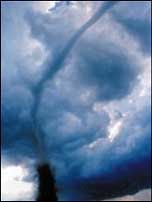
Strong Tornadoes
- 29% of all tornadoes
- Nearly 30% of all tornado deaths
- May last 20 minutes or longer
- Winds 110-205 mph
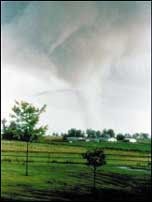
Violent Tornadoes
- Only 2% of all tornadoes
- 70% of all tornado deaths
- Lifetime can exceed 1 hour
- Winds greater than 205 mph
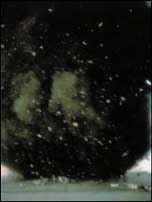
Tornado Myths
Myths: Tornadoes are safe in areas near rivers, seas, and mountains.
Fact: Tornadoes are not safe on land. In the late 1980s, a tornado went up and down a mountain 10,000 feet and crossed Yellowstone National Park.
Myth: The low tornado pressures “explode” buildings as the storm passes.
Fact: The most significant structural damage occurs. When violent winds and debris smash the buildings.
Myth: You should open the windows to reduce pressures and prevent damage. Before a tornado approaches.
Fact: Opening windows allows the structure to enter destructive winds. Just leave the windows alone and walk to a cellar, an inner room, or a bathroom without windows.
Tornadoes Occur Anywhere
Carolinas Outbreak
- March 28, 1984, afternoon-evening
- 22 tornadoes
- 5
- March 28, 1984, afternoon-evening
- 22 tornadoes
- 57 deaths
- 1,248 injuries
- damage $200 million
- 37% of fatalities in mobile homes
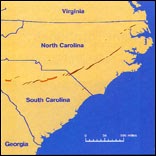
Pennsylvania-Ohio Outbreak
- May 31, 1985, late afternoon-evening
- 41 tornadoes, including 27 in PA and OH
- 75 deaths in U.S.
- 1,025 injurie
- May 31, 1985, late afternoon-evening
- Forty-one tornadoes
- Seventy-five deaths in the U.S.
- 1,025 injuries
- damage $450 million
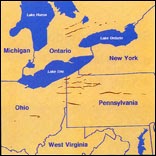
Plains Outbreak
- April 26-27, 1991, p.m of 26th to a.m of 27th
- April 26-27, 1991, the afternoon of 26th through early morning 27th
- 54 tornadoes
- 21 deaths
- 308 injuries
- damage $277+ million
- 15 deaths in/near mobile homes, two deaths in vehicles
Watching the Sky Weather Radar
The weather radar is used to notify meteorologists about storms. Doppler radars around the country may detect aviation traffic. To or from the National Weather Service (NWS) radar. Early identification of increased rotation in a thunderstorm can provide life-saving pre-tornado warnings.
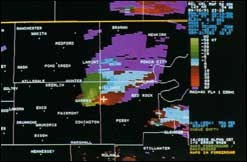
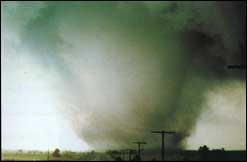
Frequency of Tornado
- At any time in the year, tornadoes can occur.
- The peak tornado occurred in the southern states between March and May. Whereas peak months occur in the northern regions during the summer.
- Note that a maximum secondary tornado occurs in several states in the autumn.
- Tornadoes are most probable between 3 and 9 p.m., but are known to occur at all times of day and night.
- The medium Tornado goes from southwestern to northeastern. However, it is known that tornadoes move in any direction. The average forward speed is 30 miles/h but maybe almost still to 70 miles/h.
- The tornadoes are probably more numerous than the Western tornadoes. The population sparse decreases the report number
Peak tornado months

United States Totals 1961-1993

US tornadoes reported and average death number 1961-1993 each year

Be informed About tornado
Listen to the recent tornado WATCHES and WARNINGS. Through NOAA Weather Radio, commercial radio, and television.
- When the weather is good, severe thunderstorms or tornado watches will be issued.
- Weather Service staff use the weather radar, spotters, and other sources. To issue severe storm and tornado warnings in areas of approaching severe weather.
- Severe thunderstorm warnings are transmitted to local radio and television stations. And transferred to the alerted regions by local NOAA Weather Radio stations. These alerts are also related to local emergency management officers. And public security officers able to trigger local alert systems to alert populations.
The best way of getting warnings from national weather service is NOAA WEATHER RADIO.
The NWS transmits up-to-date warnings and forecasts. That NOAA Weather Radios sold in many store areas can receive. Weather Service Depending on the topography, the typical range is 40 miles. You should purchase a radio that includes battery support. And a tonal warning feature. That automatically alerts you if a watch or warning is given.
For what to hear
- TORNADO WATCH: in your location, tornadoes can be found. Remain warned about coming tempests.
- TORNADO ATTENTION: A tornado was observed, or weather radar indicated. You can move to your preset safety spot if you receive a tornado warning and the sky becomes scary.
- THUNDERSTORM SEVERE WATCH: In your location, serious thunderstorms can be found.
- THUNDERSTORM SEVERE WARNING: Serious storms are taking place.
- Recall that sometimes tornadoes emerge in locations. Where a severe thunderstorm watch or alert occurs. Keep warning of symptoms of an impending tornado. Also look for cover if conditions are extreme.
Environmental Clues
- Dark, greenish sky commonly.
- Cloud of the Wall
- Wide Hail
- Loud noise, like a cargo train
Caution
Several tornadoes appear just partially to the ground like a visible funnel. Find evidence of debris underneath the apparent funnel.

Certain tornadoes are easily visible while others are covered by rain or low clouds in the vicinity.

Often these threats go hand in hand with storms:ONE weather killer: Flash Floods: 146 deaths a year
Lightning: 75-100 individuals are killed per year
Damaging Straight-line Winds: 140 mph is possible
Large hail: can reach the grapefruit size, which yearly damages land and crops for several hundred million dollars
For a copy of the “Thunderstorms and Lightning” booklet (NOAA PA 92053) and the “Flash Floss and Flood. The awful power” pamphlet. Please get in touch with your local National Weather Service. American Red Cross chapter. Or Federal Emergency Management Agency (NOAA PA 92050).
Tornado Safety
Before storm
- Develop a home, work, school and outdoor plans for you and your family.
- Have frequent drills.
- Know your county/parish and keep a road map in the vicinity to track the storm of weather.
- Have a NOAA Weather Radio with a battery backup and a warning tone to get warnings.
- Listen to information on radio and television.
- Listen to the latest predictions and act when threats to the weather are possible. If plans for the excursion is outside

If an alert is issued or if the weather is scary
- Ensure saftey
- Move to a specific refuge in a house or building, for example a basement.
- If there is no underground refuge. Move to an internal room or corridor at the lower floor.
- Keep out of windows.
- Get out of the automobiles.
- Mobile homes offer no protection against tornados, even if tied down, and they should be abandoned.
Tornadoes can form very fast. Stay alert for indicators of a tornado approaching. Tornadoes flying debris causes most injuries and deaths.
Tornado Safety in Schools
Each school must have a plan!
- Inspection of school shelter, Specified by a qualified engineer, or architect should develop a severe meteorological strategy and exercise frequently. The substrates provide the best protection. Indoor rooms and passageways on the lowest floor. Away from windows should be used in schools without cellars.
- The weather information for NOAA Weather and local radio and TV should be monitored. By those responsible for activating the plan.
- If electricity is the basis of the alarm system at the school. Use a compressed air horn or megaphone to activate the alert when power outage occurs.
- In the event of damage to the school, make sure someone knows how to switch off electricity and gas.
- If dangerous weather is forecast, keep students in school after regular hours. Children at school are safer than by vehicle or bus. When the terrible weather is approaching, students shouldn’t be sent home early.
- Delays of lunches and assemblies in large rooms. In anticipation of severe weather. High schools, cafes and auditoriums offer no protection from tornado winds.


Development of a comparative plan for hospitals, hostels and other institutions
You may educate town authorities and the public about tornadoes risks. Through your National Weather Service and the Federal Emergency Management Agency. By learning to safely look for cover while at home, work, school or outdoors, you can prepare for a tornado. You also need to grasp fundamental meteorological conditions and tornado risk signs. Therefore, If you create a plan for you and your family, and rehearse the plan often. Your chances of being safe in a tornado are better.
Family plan for Tornado
All risks affecting their area must be prepared for families. Each family is urged to establish a family catastrophe plan by NOAA. The Fédéral Emergency Management Agency and the American Red Cross.
When a catastrophe happens, where will your family be? They might be wherever – at work, at school, or in the vehicle. How are you going to find yourself? You going to know whether your kids are safe? Disasters can compel you to leave or confine your area. If the basic services – water, gas, electricity or telephones – were cut off, what would you do?
To establish a family emergency plan, follow these essential steps…
Collect hazard information on Tornado
Talk to your local Weather Service. Civil Defense or Emergency Management and American Red Cross Chapter. Find out what kind of catastrophes might occur and how. Learn the warning signals and strategies of your community for moving away.
Meet your family to develop a plan.
Discuss your collected information. Select two meeting spots. An emergency area outside your home, such as a fire and a place distant from your neighborhood if you can’t come home. Choose an out-of-state buddy. For everybody to call if the family is separated from your ‘family check-in contact’. Discuss what to do if moving away is the solution.
Post phone numbers for emergencies. Inspect your home for potential risks such as anything that can move, fall, break, or fire) and remedy them;
Install safety elements in your home such as smoke alarms and fire extinguishers;
Firstly, teach your families how and when to call 911 or your local emergency health service number. Also, learn about basic safety measures such as CPR and first aid. How to use a fire extinguisher.
Keep in your home for at least three days enough goods to fulfill your demands. Also, pack the materials you may need in the event of an evacuation in a catastrophe supply kit.
INCLUDE A DISASTER SUPPLIES KIT FOR TORNADO DISASTER
A 3-day water supply. one gallon per person each day and food that does not spoil. Also, a change of clothes and shoes per person per day. One sleeping bag or blanket per person. A first-aid package with an NOAA powered NOAA Weather Radio and a portable radio. Flashlight and plenty of extra batteries, medicine emergency supplies. A set of additional car keys and a specific credit card or cash item for children. The elderly, or family members with disabilities.
IV. Practice and keep your schedule.
Finally, ask your family for questions to ensure that they recall places. Telephone numbers, and safety guidelines.

